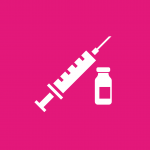Platelet Rich Plasma (PRP) injections are used to accelerate healing following a tendon injury. They belong to an emerging field of healthcare called Orthobiologics, which combines the body’s natural ability to heal with new technologies. The idea is that injecting PRP into damaged tissues stimulates your body to grow new, healthy cells and promote healing.
Blood is made up of red and white blood cells, plasma and platelets. As well as helping your blood to clot, platelets release growth factors, which can be used to encourage healing in soft tissue (tendon and ligament) injuries.
PRP injections contain concentrated platelets taken from the patient’s own blood. When these are injected into your body they:
- initiate tissue repair and regeneration
- promote the development of new blood vessels
- stimulate healing.
The treatment is used to treat tendon and ligament injuries that have failed to heal after a period of rest and rehabilitation. It is safer and less invasive than surgery and there is less risk of scarring and infection. It usually takes weeks to months to see the full benefits take effect in conjunction with physiotherapy rehabilitation.
PRP injections are used to treat:
- Chronic tendinopathy or ligament injury
- Plantar fasciitis
- Patella or quadriceps tendinosis
- Achilles’ tendinosis
- Tennis or golfer’s elbow
- Jumper’s knee
- Lateral hip pain and gluteal tendinopathy





